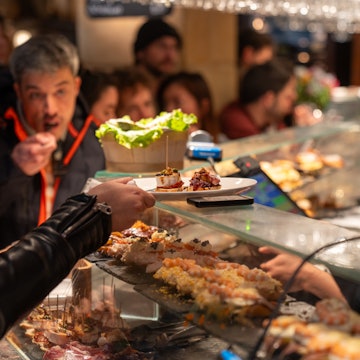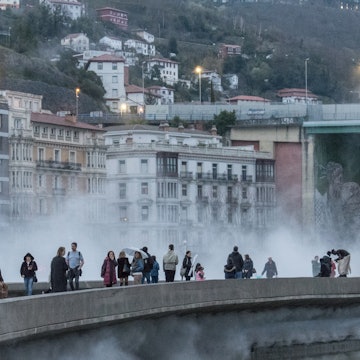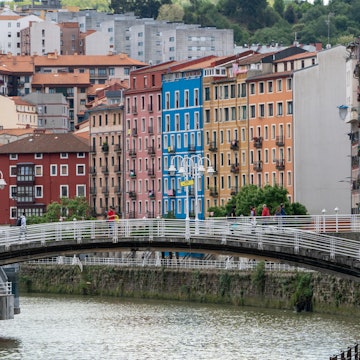
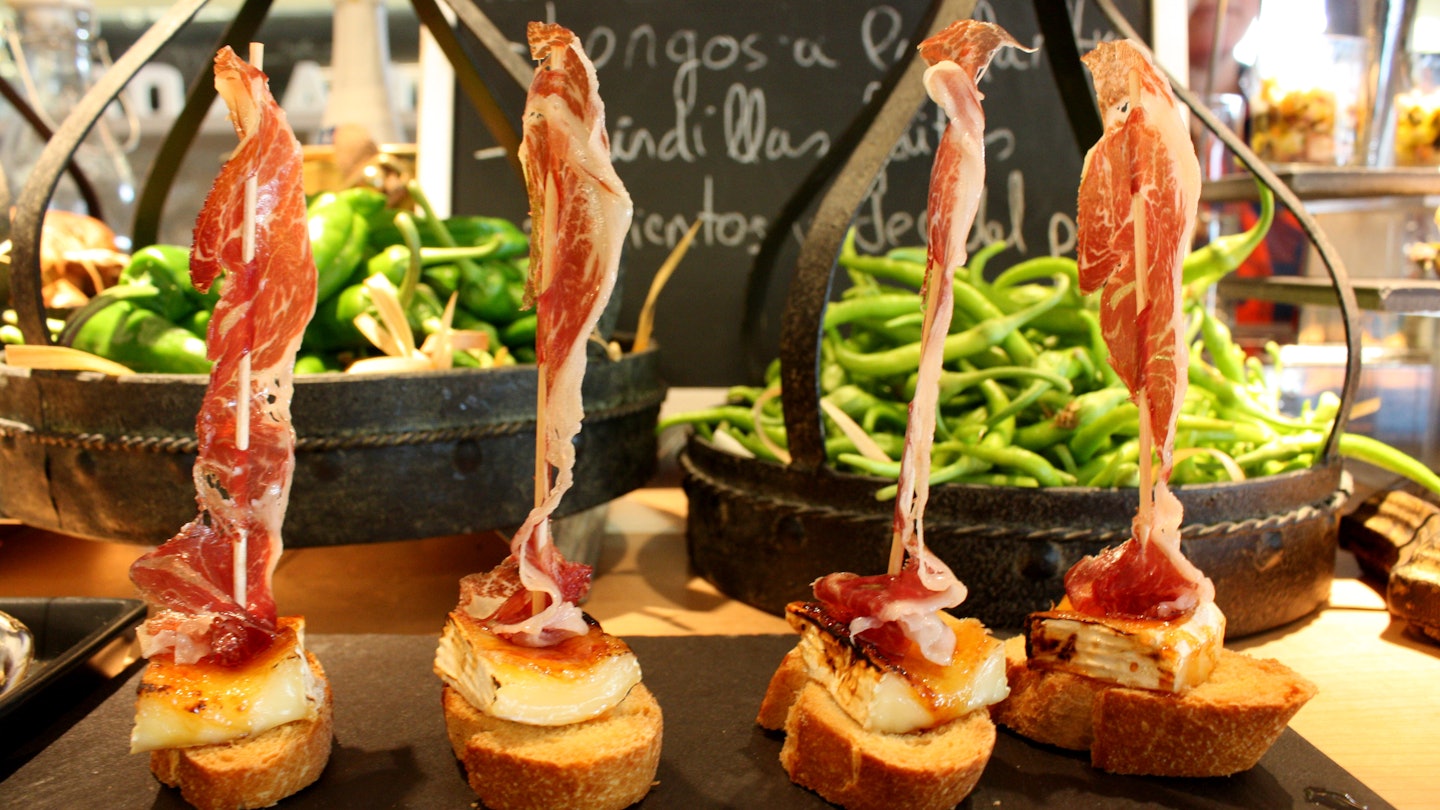
The bar counter groans with a smorgasbord of finger-friendly food art; the room is thick with chatter from the hungry patrons; the txakolí (local white wine) is being poured artfully from a height into squat Basque tumblers in a manner only Basque waiters can master; and the custard-coloured beach calls for a spot of post-lunch napping.
This is San Sebastián, a petite city that is the provincial capital of Spain’s Gipuzkoa region, and a culinary capital to rival any on the planet.

Anybody who needs to eat (in other words everybody), needs to visit this city at least once. Gastronomy, from the most basic pintxos (Basque tapas) to home cooking and Michelin-starred fine dining, courses through San Sebastián’s veins. Many locals belong to a gastronomic society, the Basque equivalent of a Masonic lodge, but with social cooking rather than strange handshakes as their raison d’être. And so it is that a love of food comes naturally to the charismatic Basque who are lucky enough to call this northern Spanish coastal town home.
With such credentials it’s little wonder that the city and its surrounding villages currently boast 17 Michelin stars. In 2016 San Sebastián also takes on the mantle of European Capital of Culture so there’s no better time to visit, with activities, exhibitions and shows taking over the city. For a day dedicated to experiencing San Sebastián’s gourmet delights, here’s our guide to finding your way to nosh nirvana, with a few non-foodie highlights along the way.
Breakfast: a morning in the market
Start the day with a trip to San Sebastián’s traditional food market, La Bretxa, located in the city’s Parte Vieja, or Old Town. The food offerings of jamón, blushing local Bonito tuna and seasonal veggies are a delicious reminder of the bountiful farmland and fishing waters round here. Look out for towers of the local green guindilla peppers and tasting samples of the tangy local artisanal sheep’s milk cheese, Idiazabal, which is still produced to an ancient Basque recipe and is a DO (protected designation of origin) product of the Basque Country.
You’ll find the produce from the market featured on the menus of pinxtos bars across town, whose chefs visit daily to handpick the best local Gipuzkoa goodies. The fattest guindilla peppers are served chargrilled and beautifully blackened, with just a dusting of sea salt. The peppers are sweet until the end of the season when the heat intensifies and eating becomes a game of foodie Russian roulette: locals joke that whoever gets the hottest one (and they can get really hot) buys the round.
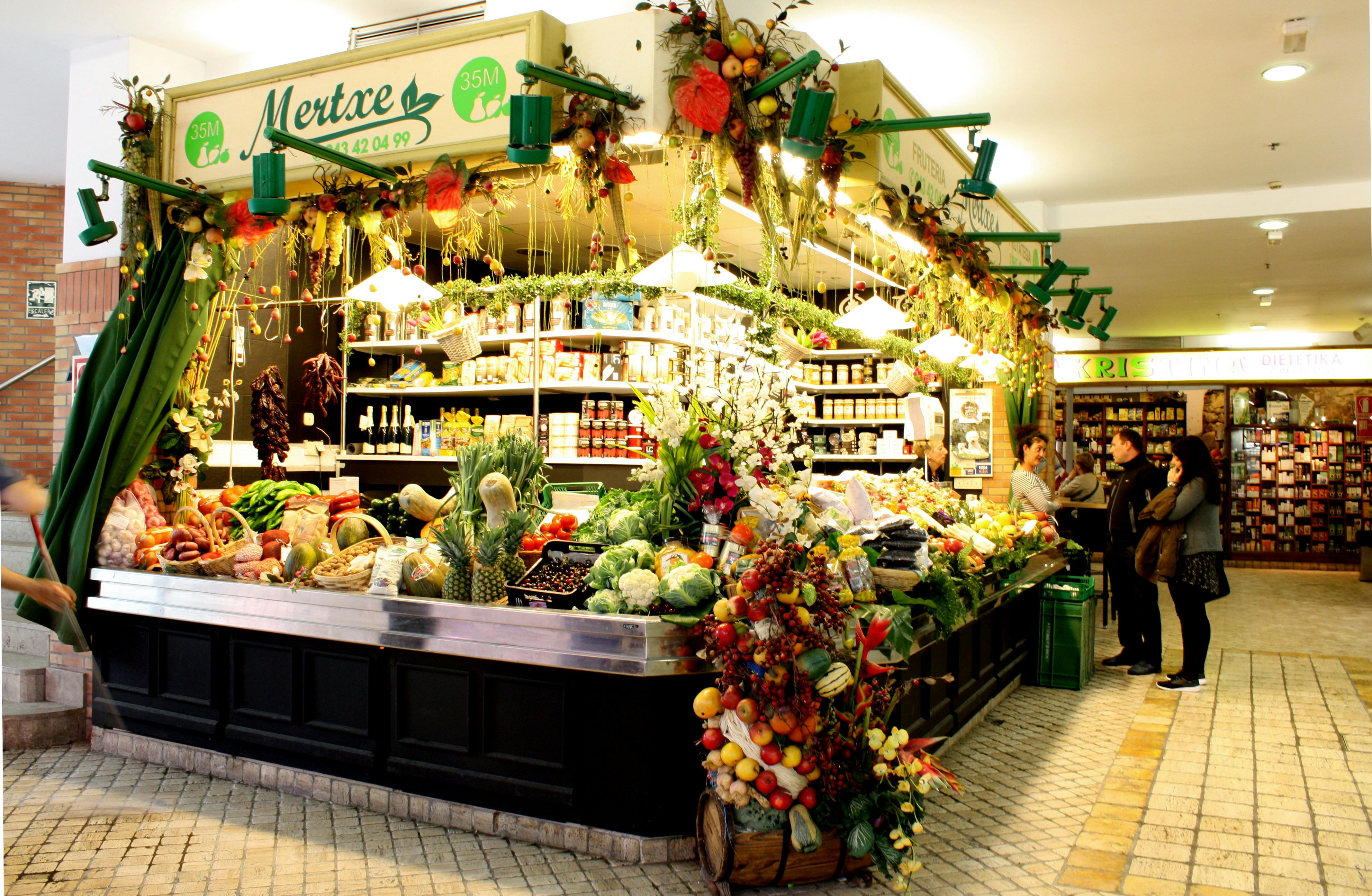
Take a look at local culture
Skip across the Parte Vieja to the San Telmo Museoa, a sophisticated architectural melding of a 13th-century convent with contemporary glass and steel that houses San Sebastián’s museum of Basque culture. The exhibits are well worth a few hours’ exploration, though the descriptions are in Spanish and Basque only. Make a beeline for the ancient grave stones that date back to the 12th century and the original convent itself, where astounding floor-to-ceiling paintings depicting ancient Basque traditions and legends such as whaling and shipbuilding were splashed across the walls in the 1930s. In the centre you’ll see San Telmo, the patron saint of seafarers, saving ships from dangerous rocks amid a tumultuous ocean and roaring waves. Just as artful as the convent murals are the pintxos at San Telmo’s in-house cafe, Bokado, where stacks of delicate morsels displayed on platters look almost too good to eat – browsing alone is an experience.
Perfect pintxos tour
Bokado can be your first pintxo pitstop but it definitely shouldn't be your last as you spend a leisurely afternoon tour enjoying the Parte Vieja’s legendary pintxos bars. Pintxos, teeny towers of food typically held together with a toothpick and grounded by a wedge of bread, are synonymous with eating in San Sebastián. It all started with the humble baguette (Basque Country borders France), which after-work drinkers used to take with them to soak up the booze. Preserved foods typical of the Basque region and cheaply available, such as olives and anchovies, were added over time and eventually pintxos developed into a Basque bar staple; each serving will set you back about €2.50-3.50.
Parte Vieja’s best bars are concentrated around Calle de 31 de Agosto and the streets fanning out from the Plaza de la Constitución. Each bar has a house speciality (especialidad de la casa), so make sure to ask. At Txuleta this is the local cut of steak (similar to a T-bone) from which the bar takes its name: tender, thick and cooked over charcoal until it’s burnt on the outside. At La Cepa (barlacepa.com), where joints of ham drip from the ceiling, it’s jabugo (top-notch Iberian ham) that you’ll want to try. While tourists often pick from the cold pintxos piled high on the bar, it’s the hot pintxos that locals tend to home in on such as gabillas, croquettes made of white ham and oozy Emmental cheese in a béchamel sauce.

Move on to Borda Berri, a San Sebastián institution with standing-room only for the lunchtime crowd, here for delicacies such as oreja de cerdo (pig’s ear), roasted and served with fried onions, a green romesco sauce and pistachios (if you’re going to try this animal appendage anywhere, this should be the place). At the buzzy La Cuchara de San Telmo, another local favourite, you might find carrillera con pure garbanzos (buttery soft beef cheeks on a bed of pureed chickpeas). At La Viña the speciality is a creamy cheesecake made to a special recipe that can only be described as heaven on earth.
At any one of these bars you’ll find the region’s most classic pintxo: the gilda, a simple twist of anchovy, caught locally off the Basque coast, coiled around green olives. The story goes that the gilda was inspired by the curves of Rita Hayworth, with whom one soppy Basque chef fell madly in love when she starred in the 1946 film of the same name. It’s a salty mouthful that makes a perfect match for the green-apple tartness of the local txakolí wine, grown in the hills around town and tinged by the salty sea air. You can try making the gilda yourself at a Basque cooking course at the excellent San Sebastián Food, whose state-of-the-art kitchen facilities are housed in the iconic Maria Cristina Hotel.
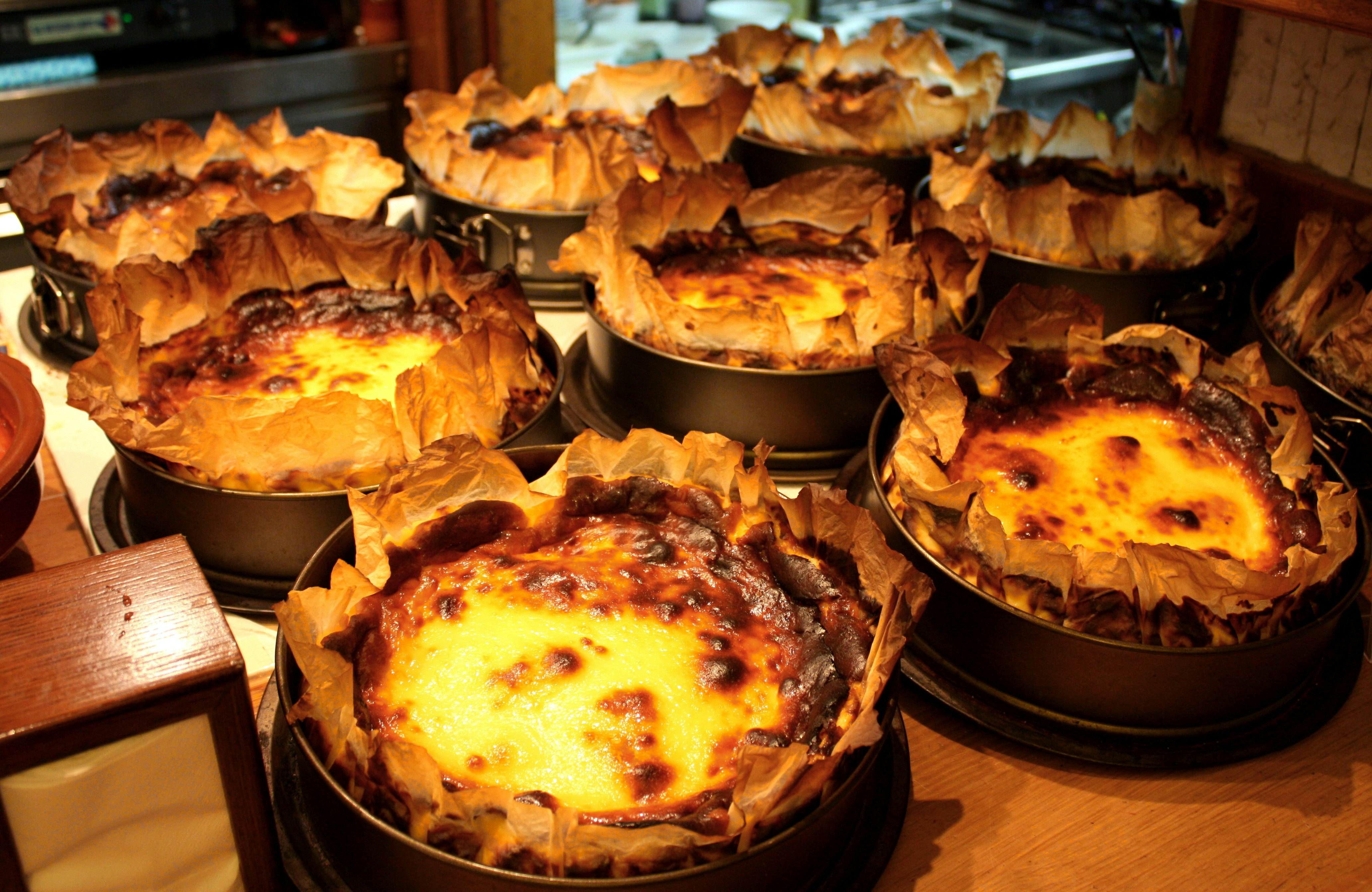
Dinner: sunset and cider
Walk off the gluttonous excesses of the day along Playa de la Concha, one of San Sebastián’s magnificently broad, golden beaches. At sunset all of city life converges on the promenade lined by 19th-century bathhouses – now cafes, bars and nightclubs – that were once coveted by the rich because of the supposed health properties of San Sebastián’s salty seawater.

Once the sun’s down, spend the evening at one of the region’s traditional cider houses which have been harvesting gallons of sidra from the local orchards for centuries. In the 17th and 18th centuries cider production was so rampant in this area of Spain that Basque seafarers used to take more of it aboard their ships than water in the hope that the vitamins it contained would stave off scurvy at sea.
Rustic and delicious, cider house food is virtually the same all over the Basque Country: a gut-busting set menu of salt-cod omelette, fried cod with guindillas, followed by txuleta steak, then local Idiazabal cheese served up with quince jelly and walnuts. Most cider houses open seasonally (January to April) when the latest year’s batch of cider is ready to be cracked open. Sidrería Petritegi (petritegi.com), in the hills overlooking San Sebastián, is one of the few open year-round. Nip out of the dining hall here into the cider barrel cave where ‘bar men’ will skilfully squirt fountains of strong, flat cider into your tankard. Every barrel is unique in flavour thanks to the singular properties of each batch so you may get caught up in the addictive search for your perfect cider – be prepared to get drenched in the process and toast the enviable epicurean lifestyle of the lucky Basque people.
Lorna Parkes travelled to San Sebastian as a guest of the San Sebastián Tourist Board (sansebastianturismo.com). Lonely Planet writers do not accept freebies in return for positive coverage.








